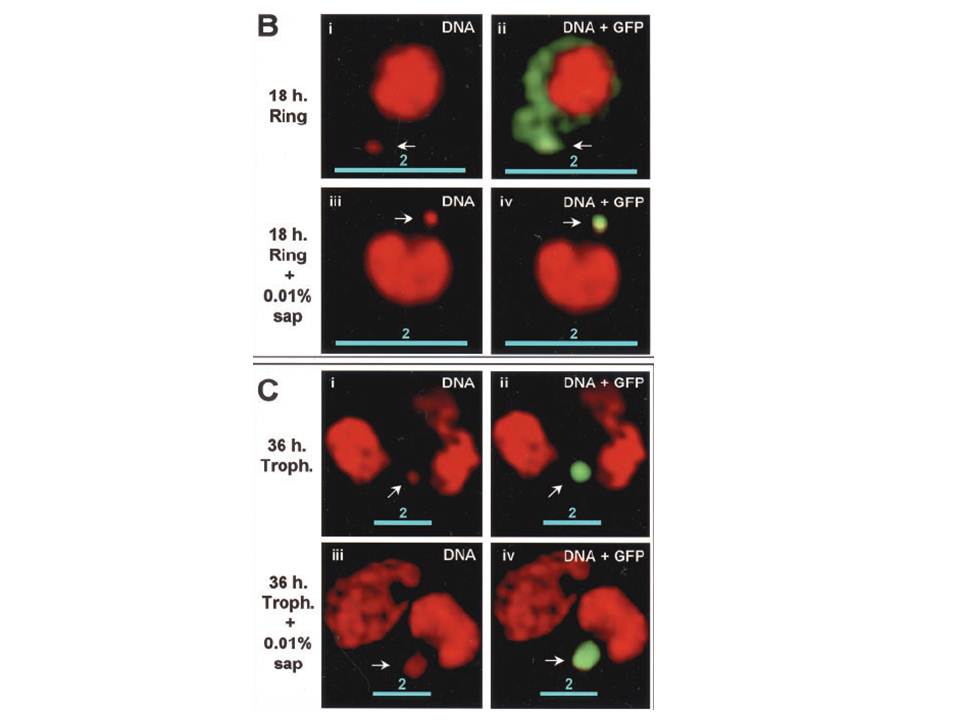The distribution of PTS-GFP and apicoplast GFP during asexual maturation through late rings to the trophozoite stage. B, 18-h rings untreated (B, i and ii), or treated with 0.01% saponin (B, iii and iv). C, 36 h trophozoites untreated (C, i and ii), or treated with 0.01% saponin (C, iii and iv).Microscopic analysis of 18-h rings revealed green fluorescence primarily in the periphery of the parasite. Low levels of green fluorescence were also seen in association with apicoplast DNA (B, i and ii). When cells were treated with 0.01% saponin, there was loss of peripheral fluorescence. However, apicoplast-associated green fluorescence could be detected in the parasite (compare B, i and ii with iii and iv). In contrast in 36-h trophozoites, green fluorescence was prominently associated with the apicoplast (C, i and ii). This association was preserved even after treatment with 0.01% saponin (C, iii and iv). The bulk (70–80%) of PTS-GFP synthesized in the ring stages, transited through the PV prior to processing to GFP in the apicoplast at the trophozoite stage.
Cheresh P, Harrison T, Fujioka H, Haldar K. Targeting the malarial plastid via the parasitophorous vacuole. J Biol Chem. 2002 277(18):16265-77.
